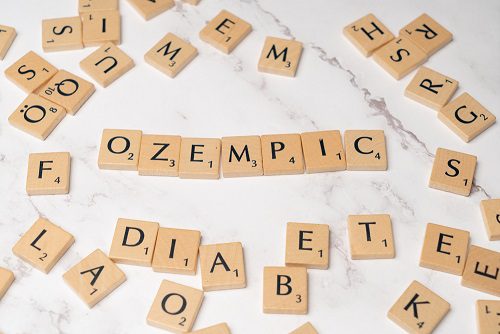
Slimming Down Demand
10/16/2023
Investment markets watch the release of new drugs to the public very closely. Recently, pharmaceuticals designed for blood sugar control have received a lot of attention, especially Wegovy and Ozempic. Both these drugs were originally prescribed to help diabetes control, but they have been repurposed for other uses, including weight loss.
Wegovy and Ozempic are ‘GLP-1s’ (glucagon-like peptide 1 agonists to the biochemically inclined). GLP-1s have been around for 20 years, but the newer GLP-1s have attracted mainstream attention with remarkable prescription growth rates. This phase kicked off with the launch of Wegovy as a weight loss-indicated drug by Novo Nordisk in mid-2021. Increasingly, patients taking GLP-1s have no prior history with diabetes drugs. Life sciences analytics firm, IQVIA, estimates this group represents nearly 40% of newer GLP-1 users.
Information travels quickly in 2023, especially via social media. Elon Musk was recently noticed to have slimmed down. He admitted to losing about 20 pounds, partially crediting Wegovy. This past summer TikTok suspended accounts for propagating GLP-1 mania. This mania has been reported by WebMD to have contributed to a shortage of the drugs for diabetes patients.
The GLP-1 market is forecast to grow at 6% per year through 2032 from $13.4 billion last year. Pharma companies expected to directly benefit from this growth include Pfizer, Eli Lilly, Sanofi, Novo Nordisk, and AstraZeneca. There has been much speculation on the indirect impacts on other companies and sectors. If GLP-1s reduce cravings and lower total calorie consumption, will the food industry, particularly snack food brands, be adversely impacted? Earlier this month, Walmart reported a “slight pullback in overall basket” for consumers taking medications for weight management. Wall Street analysts have voiced concern over demand headwinds for fast food and sugary drinks if weight loss prescriptions remain popular.
GLP-1s cost an average of $900 to $1,350 a month, and many insurance plans do not cover their use for weight loss. Consequently, these elective medications will be beyond the budget of many Americans. The likely uneven uptake across the socioeconomic spectrum makes considering investment impacts even more intriguing. Airline passengers, who typically have above-average income, may be more able to afford GLP-1s. Those who have experienced the discomfort of insufficient personal space on a flight may be particularly motivated. Beyond improving passenger comfort, analysts at Jeffries have estimated that if enough passengers were to lose weight from GLP-1s, fuel savings to airlines could approach $100 million per year. On the revenue side, clothing retailers could benefit as waist sizes shrink and wardrobes need to be refreshed. The impact on retailers will probably vary based on the income and age of their customer bases.
Perhaps GLP-1 hype is overdone. The popularity of these drugs might fade, especially if publicity moves on to discussion of side effects. Unlike the demand for COVID-19 vaccinations, though, the clamor for a drug fix for weight loss is unlikely to go away soon. The impact on consumer behaviors, shifting demands, and corporate America will be fascinating to follow.
Cam Simonds
